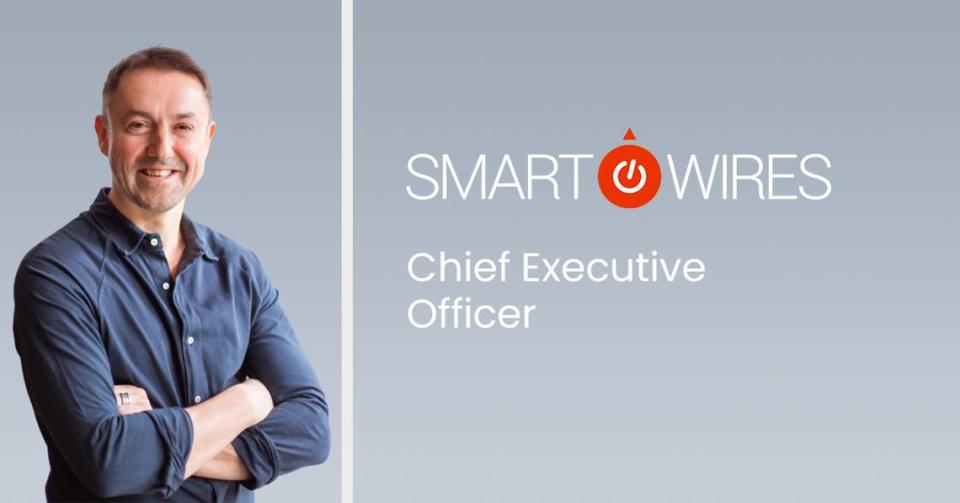Smart Wires’ CEO says relocating HQ from California to the Triangle is all about talent
Peter Wells, the CEO of power technology company Smart Wires, believes his company is on the cusp of serious growth in the coming years.
But that growth, Wells believes, would have been hard to manage in the San Francisco area, where the company has been based since it was founded in 2010.
Last week, Smart Wires, which makes technology to efficiently manage power in energy grids, announced it was moving its Bay Area headquarters to Durham. It’s a move that will ultimately net the Triangle some 250 jobs, and North Carolina offered the company a $2.8 million incentive package to make it happen.
In an interview with The News & Observer, Wells said the decision was all about access to talent. In California, he said, competition between companies has grown fierce and the cost of living is driving entry-level employees away.
“It’s a little harder to find people (and) expensive when you do,” Wells said in a Zoom interview.
And because of the nature of his company’s business, crafting technology for power grids, the company often hires highly skilled electrical engineers, including many with doctorates. And other companies and industries constantly tried to pry them away.
“Talent was getting sort of harvested by other industries that maybe pay a lot more money than you might see in energy,” Wells said. “It was a challenge.”
With the company about to ramp up its growth in the coming months, Wells believed it was time to move the headquarters. And since the company’s lease runs out at the end of the year, it began a nationwide search.
Smart Wires ended up narrowing its search down to five cities, Well said, including Austin, Atlanta, Denver, the Triangle and its existing location in Union City, California.

The Triangle, Wells said, had the best all-around score in its analysis thanks to its cost of living, existing power-tech companies and local universities.
“There are other (power) companies here, like Hitachi ABB,” Wells noted. And “N.C. State works very well in this area. Duke has a really good electrical engineering program. There are other colleges around, and Georgia Tech’s not that far away. I mean there’s a a lot of stuff in the area.”
It’s also — at least for the moment — reasonably priced, Wells said, especially compared to places like Boulder, Colorado, and Austin.
“The cost of living and housing clearly is going up (in the Triangle),” he said, “because companies are coming in and they’re investing ... but there’s a long way to go before we get” to California levels.
Wells is familiar with the Triangle, though much has changed since he last came through. He worked at GE’s plant in Wilmington between 2003 and 2010, and often visited Raleigh. Since then, he said, the area’s cultural amenities, from its bars and restaurants to music and cafes, have improved dramatically.
The company hopes to have its research-and-development lab open in Durham later this year. It is currently eyeing space in the southern Durham County near Raleigh-Durham International Airport.
Some of the company’s roughly 140 employees will relocate to the Triangle — but most of them will remain in California or work remotely. About 40% of the company’s employees work abroad.
At the moment, about 15% of Smart Wires business is in the U.S. The company is really active in South America, the U.K. and Australia, where countries are really investing into efforts to modernize their power grids, Wells said.
But Wells believes the U.S. market could be a significant area of growth in the coming years, as investments pick up in wind and solar energy. Smart Wires technology helps utility providers connect their grids to wind turbines and solar panel farms and helps them efficiently manage the power that flows from them.
Wind turbines and solar panels are often built far away from traditional power grids, which complicates how utility companies can effectively manage their power.
“In England, all the renewable power is generated in Scotland and offshore in the North Sea. But all the demand is in the south of England,” Wells said, adding most countries have a similar dynamic, including the U.S. “You cannot just simply move the power. And everybody’s running into these issues, so they don’t have enough capacity, and they run into congestion issues.”
Wells said the U.S. could see a surge in investments in modernizing power grids across the country, so that they can handle more alternative-energy connections. The company is closely watching what will be included in an infrastructure bill currently being debated in Congress, and hopes it will provide incentives to modernize power grids.
“Frankly, even without that (infrastructure bill),” Wells said, utilities “are going to have to modernize. They can’t avoid it. So we think that the U.S. market over time ... is probably going to be more like 30 to 50%” of the company’s business.
This story was produced with financial support from a coalition of partners led by Innovate Raleigh as part of an independent journalism fellowship program. The N&O maintains full editorial control of the work. Learn more; go to bit.ly/newsinnovate.

